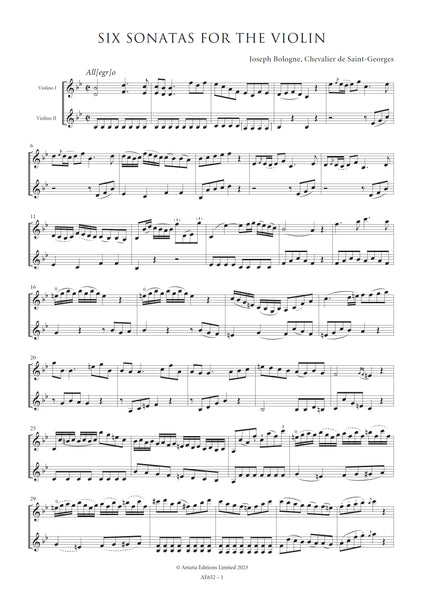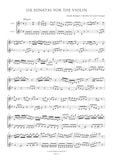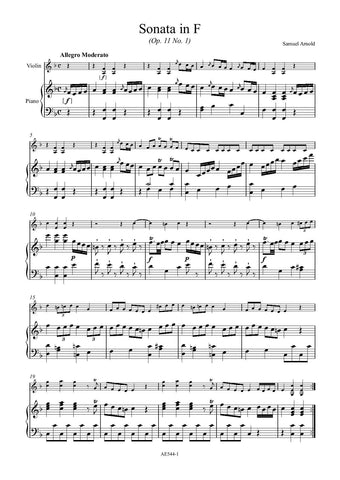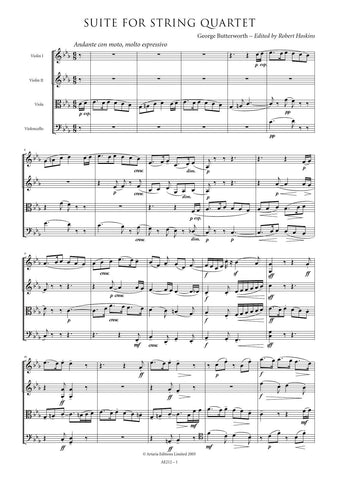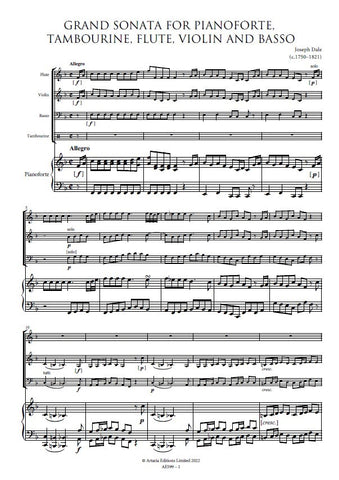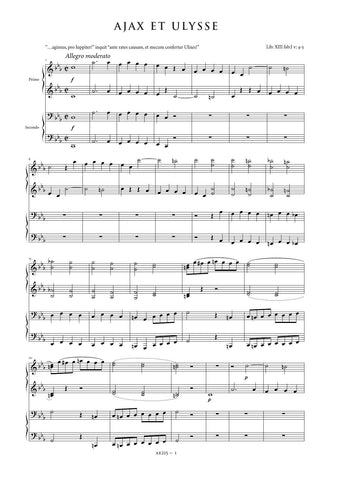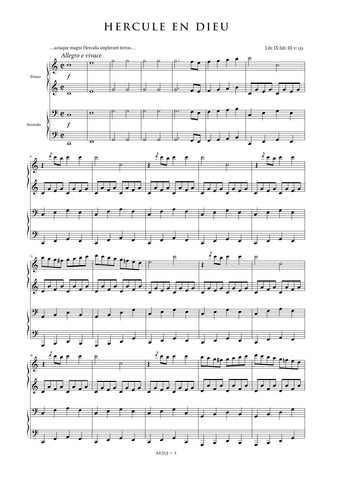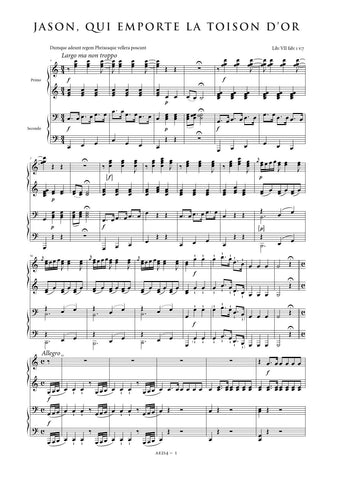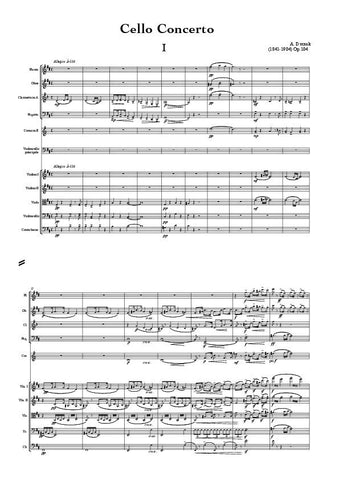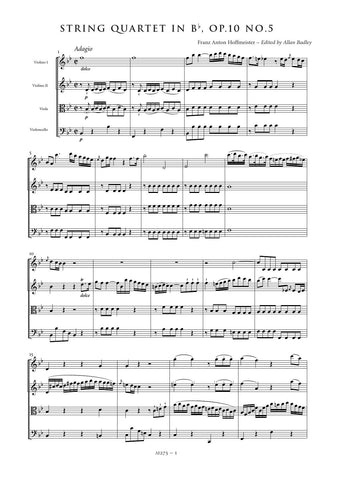Description |
Saint-Georges, Joseph Bologne de (1745-1799)
|
||||||||||||||||
Details |
By the standards of the time Saint-Georges was not a prolific composer but this is hardly surprising given the exceptional range of his activities. The majority of his instrumental works were composed between ca 1771–1779 and issued in printed editions by leading Parisian publishers such as Bailleux, Le Duc and La Chevardière during the same period. In 1800, a year after Saint-Georges’s death, Pleyel issued an edition of six sonatas for the violin in two sets of three works. The title page of Pleyel’s edition, the only known source for these works, reads: ‘Six / SONATES / Pour le Violon / Par / ST. GEORGE / OEuvre Postume / 1 [2] Livre Gravées par Richomme PRIX 7tt.4s / A PARIS / Chez Pleyel Rue Neuve des Petits Champs. No 1286, vis-àvis la / Trésorerie Nationale. [line] / Propriété de l’Editeur / Enregistré à la Bibliothèque Nationale. / 258 et 259’. These were not the first sonatas for violin by Saint-Georges to appear in print. A set of three sonatas for keyboard with violin [AE431], composed ca 1770, were published by Le Duc in 1781 as Op.1 although they are more usually referred to today as Op.1a to distinguish them from the composer’s first set of string quartets. The present works are unusual in being written for violin with an accompaniment for violin rather than basso or keyboard. The two parts are not treated equally in the manner one might expect in a work composed for two identical instruments. The primo ‘solo’ part carries all of the material of melodic interest while the secondo part is relegated to an accompanying role with little or no motivic interplay with the primo part. This clear differentiation of function raises questions about the works’ origins. Although there is no external evidence to corroborate Saint-Georges’s authorship, there is compelling stylistic evidence to accept them as authentic. The loose, discursive structure of the first movements, which frequently contain virtually unaltered repetition of material and little in the way of thematic development, and the occasional awkward voice-leading, suggests inexperience on the part of the composer. It is possible therefore that the works predate the composition of the Op.1 string quartets and Op.1a sonatas. Nonetheless, with no requirement for a keyboard accompaniment, the portability of these sonatas would have made them ideal works for Saint-Georges to play during his vagabond existence in the years following his release from prison. The primo part, which at times exploits the violin’s highest tessitura as well as including passages that require great agility and technique to play, are strongly reminiscent of the solo concertos and symphonies. |
||||||||||||||||
Score Preview |
Loading...
Error




